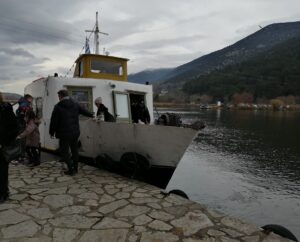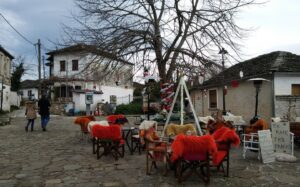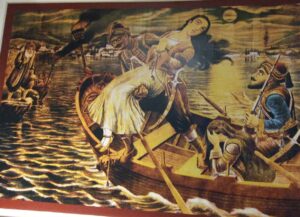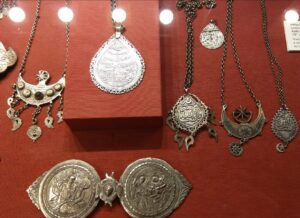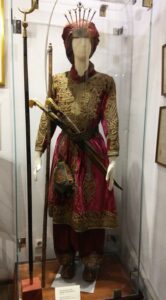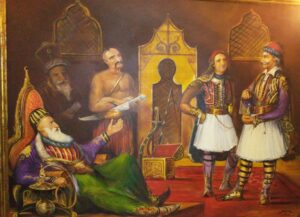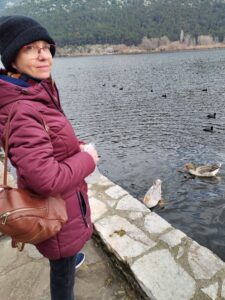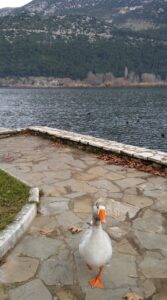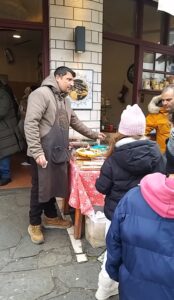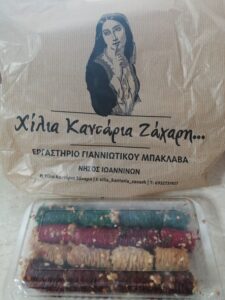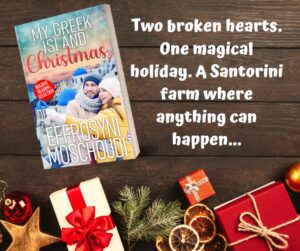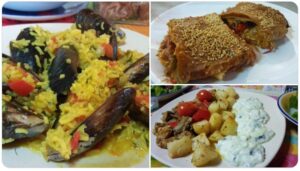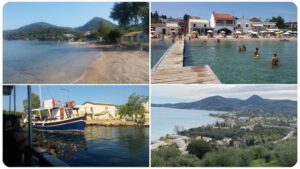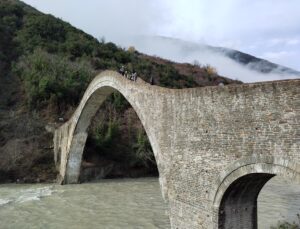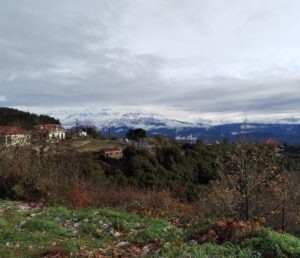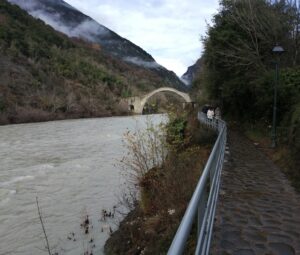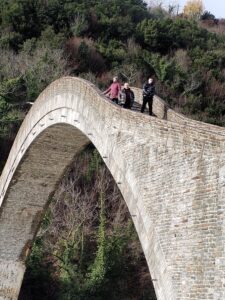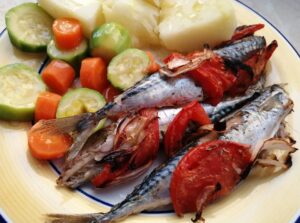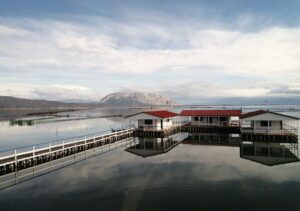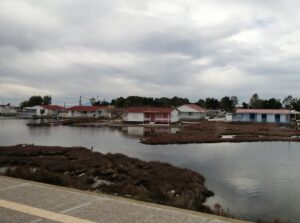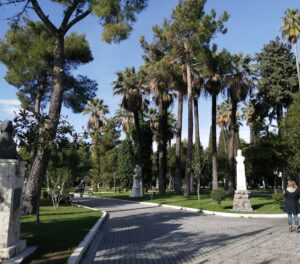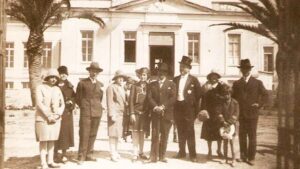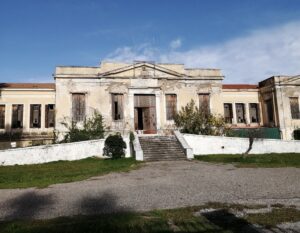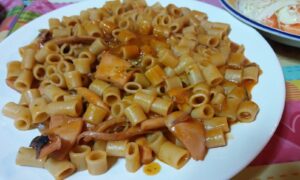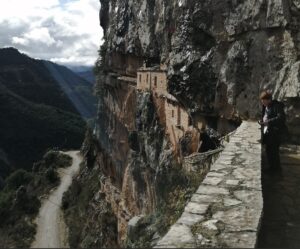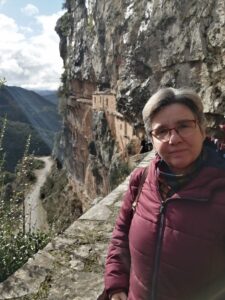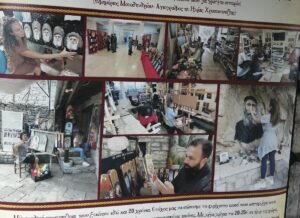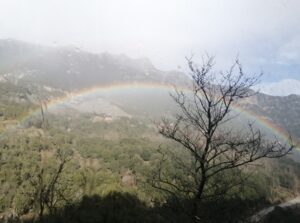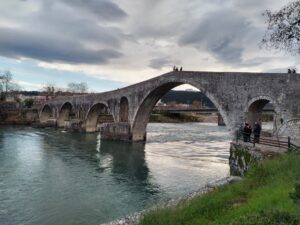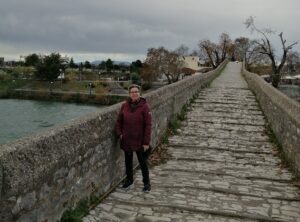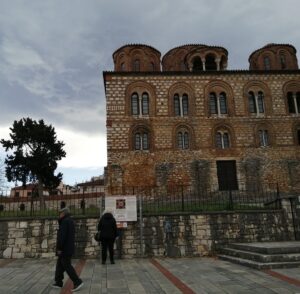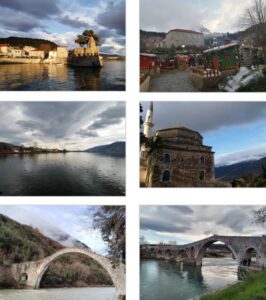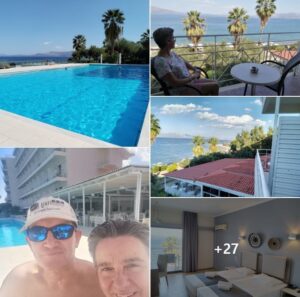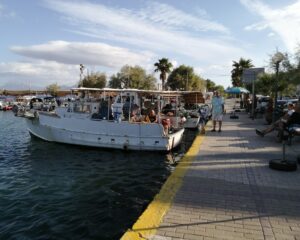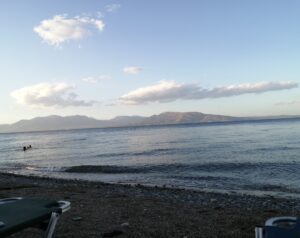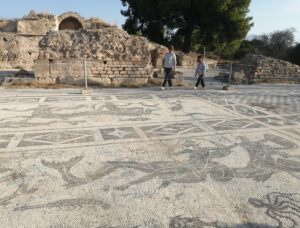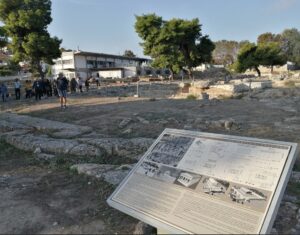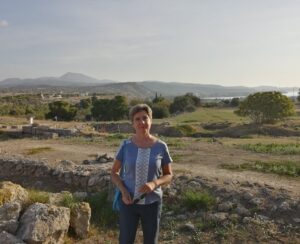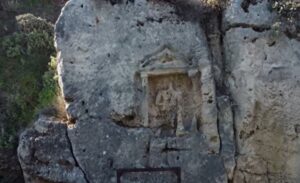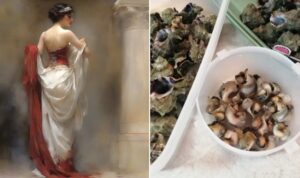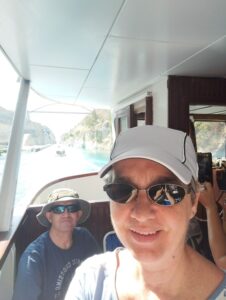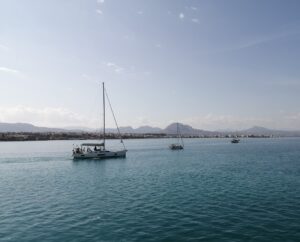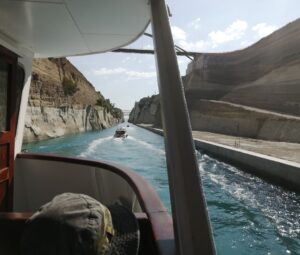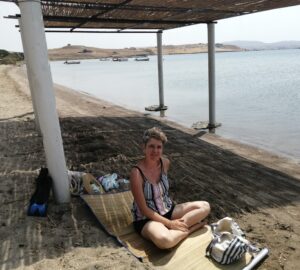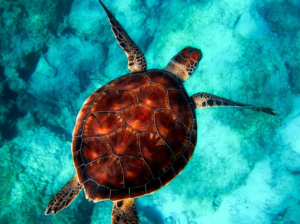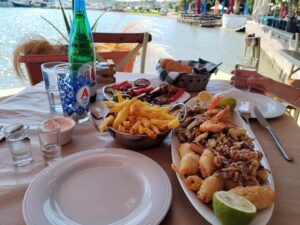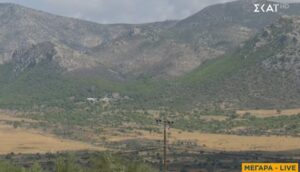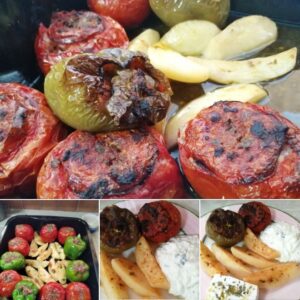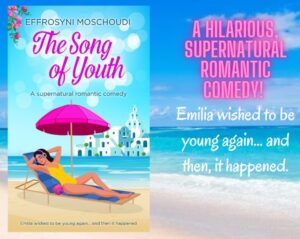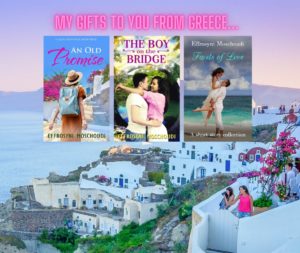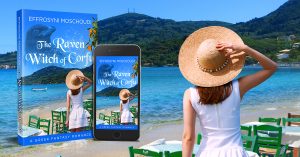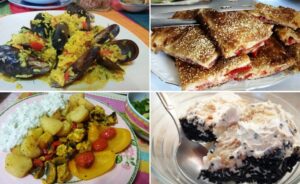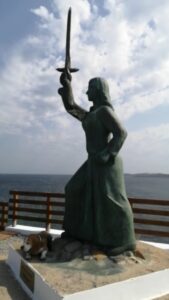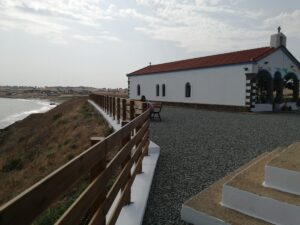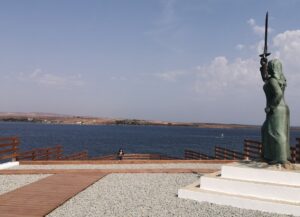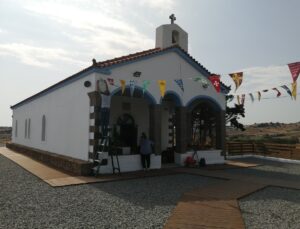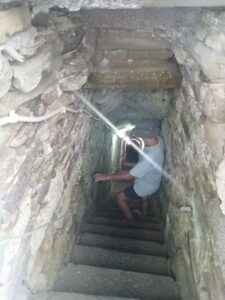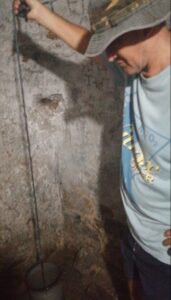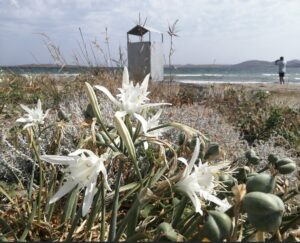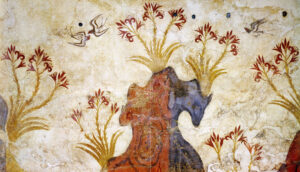The island of Ali Pasha in the lake of Ioannina offered sadness but also laughter
During my recent trip to Epirus where my husband and I stayed in the historic city of Arta, we visited another historic city – Ioannina – for a day. Ioannina is a stunning city built on the lake Pamvotida, and there is a small inhabited island in it that people can visit on small tourist boats. All day, they go back and forth on the lake, full of tourists.
The first thing we did when we arrived at Ioannina was to queue up for the next boat to the island to see the museum of Ali Pasha and have a walk around.
Seeing that this island was never given a name, it is colloquially called “The Island of Ioannina”, “The Island of Ali Pasha”, or “The Island of Kyra Frosini.”
Ali Pasha was an Albanian from Tepeleni who became a ruler of Epirus in the days of the Ottoman Empire. Although during his longstanding rule over the Greeks he built many Christian churches, roads, and generally benefited the Greek people greatly, he was also infamous for his cruelty.
In my post about the famous bridge of Arta I mention an ancient plane tree by the bridge where Ali Pasha would have people hanged. He loved to sit under it and watch the people hanging on the branches.
That was him all over. And the comeuppance he got in the end was just as cruel, I believe. As they say, what goes around comes around… I’ll tell you about that a little later in this newsletter…
Perhaps one of the most cruel deeds of Ali Pasha was the heartless decision to have a local woman, “Kyra Frosini” (Lady Effrosyni), drowned at the lake along with seventeen other young women on the night of 11 January 1800.
Kyra Frosini was no Jane Doe, and her execution caused much upheaval in the community. She was an aristocrat and socialite, a mother of two children, who was greatly admired for her beauty and her intelligence. Her family was local but very rich, seeing that her father was a merchant in Venice.
Frosini had an affair with Ali Pasha’s son, and Ali Pasha’s wife couldn’t stand it. It was because of her insistence that Ali Pasha gave the order to have Kyra Frosini arrested and drowned at the lake for adultery, while punishing at the same time seventeen other innocent girls in the same way.
However, there are rumors that Ali Pasha himself was in love with Frosini and thus had her killed out of spite as she’d chosen his son instead of him, and that he had the other girls executed to hide his real motive.
Whatever was the real reason for the executions, the legend still holds strong today. The name Kyra Frosini is famous all over Greece. Her name is especially prominent on the lips of everyone who visits Ioannina, seeing that through the centuries the attrocity transpired in the lake is still deemed so difficult to digest that everyone keeps speaking of it, unwilling to let it be forgotten.
The museum of Ali Pasha is housed in a traditionally stone-decked old building that is in the grounds of the old Monastery of St Panteleimon. Before entering the museum, I visited another small building at the court. It had a single space inside, the display dedicated to the drowning of Kyra Frosini.
Inside a small barge, the visitor will see dummies of Kyra Frosini and the Turks who carried out the merciless deed of her execution. A lament echoes through the speakers while a large TV screen silently plays on a loop the scene of the drowning from the 1959 movie, The Lake of Sighs starring Irene Papas in the role of Frosini.
It was heartbreaking to stand inside that room and witness all that, to say the least, and I lingered a few moments silently in there to contemplate upon the cruelty and attrocities of evil rulers, and the longstanding oppression of the barbaric Ottoman Empire over my homeland, in particular.
In Greece, we have a saying that goes, “He/she put on Arta and Yannina” (Yannina is a colloquial way to say “Ioannina”.) The saying is used when someone is overdressed, especially when they’re wearing too much jewellery.
This is a remnant from the days of the Ottoman Empire, where places like Arta, Ioannina, and Zagori were inhabited by rich Greek merchants. They lived in luxury, displaying their wealth with gold-threaded clothing and heavy jewellery, in huge contrast to the masses of their countrymen who lived under miserably poor conditions.
Inside the museum of Ali Pasha, the many artefacts of clothing and jewellery from that era attest to that fact, showing how this saying came about.
The museum has two levels full of displays, some easier to digest than others. I refer here to the dungeon and torture instruments part of the displays where one can see torture tools that I am having trouble to forget.
The most gory of all was an instrument that ‘separates flesh from bone’. Just looking at it behind the glass and imagining how the very thing had been used, surely even on innocent people, caused my blood to chill. Sometimes, being an author with an active imagination can be counterproductive LOL!
After considering the oppression and the cruelty of the Turkish rulers, and the suffering they have caused to my countrymen while I shuffled from display to display, I finally reached one that told the story of Ali Pasha’s day of demise.
In the end, it was his own people who turned against him, branding him a traitor. So, on January 24, 1822, knowing that Ali Pasha had found refuge at the Monastery of St Panteleimon on the island of Ioannina, Turkish military men attacked him there. Ali Pasha shot at the men and a short battle ensued.
Having been mortally wounded, the 81-year-old was rendered helpless. The men dragged him to the court outside and beheaded him there, at the same space that is now the entrance to the museum. They then took his head to the Sultan Mahmud II, who had ordered the execution, to show proof that it had been carried out.
Leaving the main museum building, I entered another small one across from it. It had two tiny halls that house letters from prominent Greeks, like Alexandros Ipsilantis, and many household items too, like porcelain figurines and pottery.
After that, making a right turn past the Ali Pasha Museum I arrived at the small caves that were used by the locals in WWII. They fled there to shelter themselves from the bombings carried out by the Italians in November 1940.
In the cave openings, now stand dummies of men, women and children, while old items of the era are scattered everywhere, like a radio, lanterns, flasks, stretchers and petrol containers. Sounds of bombings echo from the speakers. It is a bleak, yet, I expect, accurate representation of another harrowing era in this city’s vast past.
The same caves also served as dwellings to holy men in the 15th century – like Saint Savvas and monks Theophanes and Nektarios Apsarades who founded the Varlaam Monastery in Meteora.
An insistent (and rather scary) little duck
After seeing all the displays, it was time for some fun outdoors. I had kept some ‘koulouri’ (sweetened bread with sesame) to feed the ducks and once they saw me holding it they swam straight at me. One of them quickly proved to be the quickest to get to the bits of sustenance, but it also turned out to be insatiable!
Once I’d thrown all the bits, it came out of the water and started to follow me around. I kept shooing it and laughing, and it kept looking at me inquisitively, as if saying, “Come on! Where’s the rest of it?”
Somehow, it let me go in the end, and once it began to waddle away from me an Asian lady approached it and tried to pet it. The moment her hand hovered over its head, before she even got to touch it, this duck emitted the most shrill loud scream one could ever imagine would come out of such a small creature.
The poor Asian lady literally jumped back in horror, then walked away in a hurry from the mad fowl. It’s been four months and I still laugh when I think about it haha
More fun awaited at the sweet shop, “A Thousand Quintals of Sugar.”
Before visiting the island someone had tipped me off to look out for the ‘funny guy’ who is famous on Tik Tok. They said he sells traditional syrupy desserts of Ioannina in his shop that are unmissable. The family make them in their own preparation facility a little further down the road from the shop.
I clocked the guy easily! And you can’t miss the shop. It’s on the path from the dock to the museum of Ali Pasha, and it’s right in front of you when you get to it.
The shop is called A Thousand Quintals of Sugar (In Greek, Χιλια Κανταρια Ζαχαρη) and the logo is a drawing of Kyra Frosini (I told you she’s everywhere!)
The man stands at the shop entrance giving people little treats to entice them to buy while making funny faces, calling the strangers funny names and saying the most hilarious things. I had a little taste of the guy’s humor and I soon was in stitches just like everybody else.
He called me ‘bourbourini mou’ and I have no idea what that means LOL! And he called all the men ‘Pashako mou’ which means ‘My little Pasha).
There are some absolutely hilarious clips of him on Tik Tok (hashtag #γαργαλιαρης), if you’re interested in seeing him firing on all cylinders with a big crowd. You can watch the short video I took of him to get an idea. You’ll hear me giggling away 🙂
He didn’t stop speaking both times I passed by and while I shopped inside the store, and people kept laughing. He is like the Duracell bunny champion of salesmen, what a guy!
Well worth visiting the island just to meet him! Chances are, he’ll see you and call you over before you even spot him LOL!
I don’t know if he’d be interested in a career as a comedian, but he definitely has the talent!
After purchasing a selection of his delicious desserts we also got some souvenirs from the many Greek art stores. If you’re ever in Ioannina do check out their silverware on display. The silver craftsmen of Ioannina are famous, and you’ll find something to take away with you at a low price to cherish forever, that’s for sure.
I have uploaded my photos from the island on Facebook. Go here to check them out! You will see more artefacts at the museum, the caves with the WWII display, and also the glass tanks full of live eels and frogs at the tavernas on the dock.
Oh yes! Eels and frog legs are on the menu over there, but, of course, I shied away, LOL!
You can also visit the museum website to see more photographs.
Fish and prawns in a light tomato sauce is yummy!
This quick and easy meal with fish and prawns is best served on a bed of rice or fries. I’ve also had it with boiled potatoes. That works too!
The tomato sauce is very light as the recipe uses only fresh tomato in small quantity. It’s a light but hearty meal to have for dinner.
Although it’s aestherically pleasing as it is, being so colorful, I sometimes add a final touch using the super-nutritious black sesame seed as you can see in the picture. It adds a dash of color to the boiled rice, too.
Hubby loves it!
GO HERE TO GET THE RECIPE

Sharing is caring! Here’s a ready tweet for you to spread some love:
Interested in travel, food and books from Greece? Here's a blog you will love! #Greek #blogger #writer Share on X
Limited time offer! Sign up below and get these books for FREE!
New! Clean Christmas romance. Two broken hearts. One magical holiday. A Santorini farm where anything can happen. Check it out on preorder! Launches December 4, 2025

